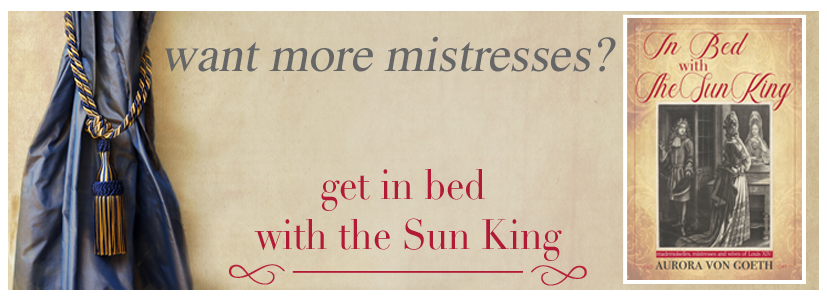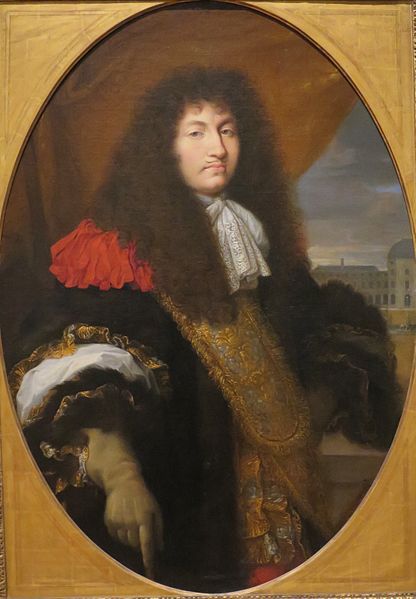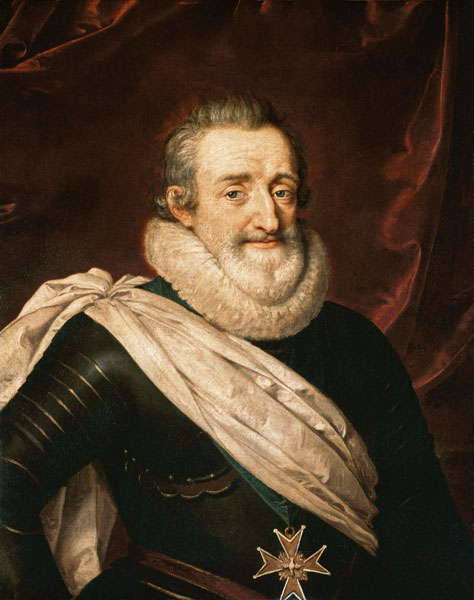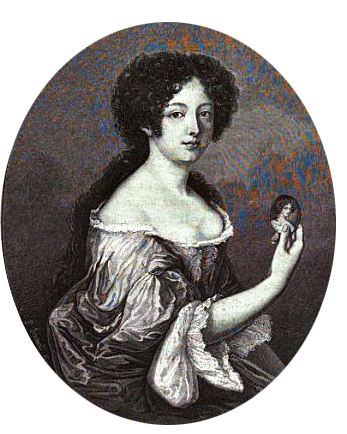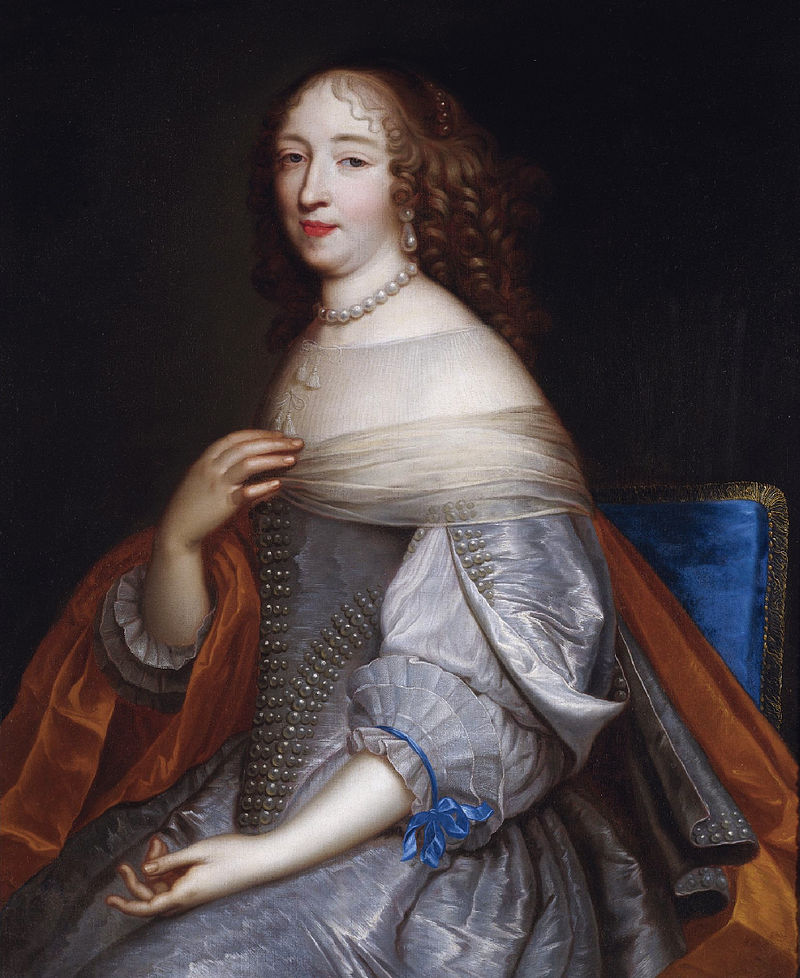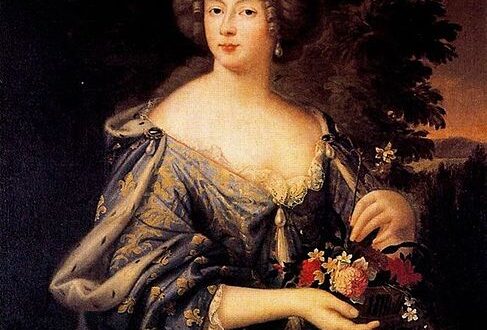Jeanne-Baptiste d’Albert de Luynes, Comtesse de Verrue
Born on 18 January in 1670 at the Hôtel de Luynes in Paris, Jeanne-Baptiste was a daughter of Louis-Charles d’Albert, Duc de Luynes, and his second wife Anne de Rohan, a daughter of the famous Madame de Chevreuse.

Jeanne, who was named after her godfather Jean-Baptiste Colbert, spent most of her early years at Port-Royal, where she was educated. As she just had finished her education, at the age of thirteen, she was sent off to marry a “young, handsome, rich, and honest” man by the name Auguste-Manfroy-Joseph-Hiérosme-Ignace Scaglia or short Joseph-Ignace Scaglia, the Comte de Verrue, who was colonel de dragons and a Piedmontese diplomat to the Duc de Savoie.
The Comte took his young wife to Turin, the capital of Savoy, with him. It were exciting times, for Victor-Amédée II, the Duc de Savoie, was just about to marry a great French Princesse, Anne-Marie d’Orléans, and the Comte’s mother was appointed lady-in-waiting to the new Duchesse.
Jeanne and the new Duchesse were around the same age. Everything was well. The Ducal couple got along quite well and also Jeanne and her hubby got along well. They had four children born to them between 1684 and 1688…..
….which was the year the Duc de Savoie suddenly took an interest in Jeanne. It was not so obvious in first, but as time passed… the Duc’s advances were hard to over look. He was madly in love with her.
The Comtesse, firm in the pious spirit she had been educated in, did her very best to ignore the Duc’s advances, especially when the Duchesse was around. It was not easy. Jeanne did not know what to do. Of course, talk of it, how the Duc ogled the Comtesse, spread quickly and also reached France. While Jeanne did not know what to do, Louis XIV knew exactly what she ought to do… and that was to take advantage of the whole thing. If the Duc was really so madly in love with her… why not play along… and maybe influence him to be a little bit more pro-France? The Duchesse apparently thought the same about the matter and so did Jeanne’s family.
Saint-Simon describes it like this: “Monsieur de Savoie often met Madame de Verrue, and soon found her much to his taste. She saw this, and said so to her husband and her mother-in-law. They praised her, but took no further notice of the matter. Monsieur de Savoie redoubled his attentions, and, contrary to his usual custom, gave fetes, which the Madame de Verrue felt were for her. She did all she could not to attend them, but her mother-in-law quarrelled with her, said she wished to play the important, and that it was her vanity which gave her these ideas. Her husband, more gentle, desired her to attend these fetes, saying that even if Monsieur de Savoie were really in love with her, it would not do to fail in anything towards him. Soon after M. de Savoie spoke to the Madame de Verrue. She told her husband and her mother-in-law, and used every entreaty in order to prevail upon them to let her go and pass some time in the country. They would not listen to her, and seeing no other course open, she feigned to be ill, and had herself sent to the waters of Bourbon. She wrote to her father, the Duc de Luynes, to meet her there, and set out under the charge of the Abbé de Verrue, uncle of her husband. As soon as the Duke of Luynes arrived at Bourbon, and became acquainted with the danger which threatened his daughter; he conferred with the Abbé as to the best course to adopt, and agreed with him that Madame should remain away from Turin some time, in order that Monsieur de Savoie might get cured of his passion. Monsieur de Luynes little thought that he had conferred with a wolf who wished to carry off his lamb. The Abbé de Verrue, it seems, was himself violently in love with Madame de Verrue, and directly her father had gone declared the state of his heart. Finding himself only repulsed, the miserable old man turned his love into hate, ill-treated Madame de Verrue, and upon her return to Turin, lost no opportunity of injuring her in the eyes of her husband and her mother-in-law. Madame de Verrue suffered this for some time, but at last her virtue yielded to the bad treatment she received. She listened to the Duke of Savoy, and delivered herself up to him in order to free herself from persecution. Is not this a real romance? But it happened in our time, under the eyes and to the knowledge of everybody.”
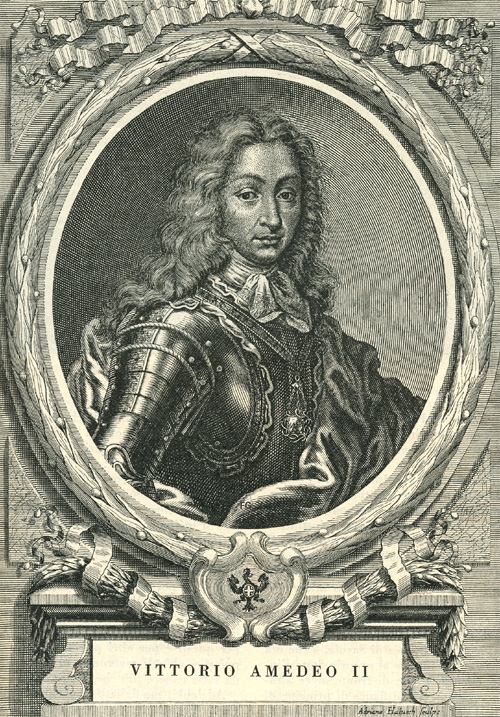 Thus, in 1689, Jeanne, after considerable pressure from all sides, became the official mistress of the Duc de Savoie. The Comtesse soon became the most envied woman at court. Since the Duc was so madly in love with her, he also allowed her to mingle in politics. Like when it came to finding a wife for the Duc de Bourgogne, the eldest son of Le Grand Dauphin. Jeanne and the Maréchal de Tessé pretty much arranged for him to marry the Duc’s daughter Marie-Adélaïde.
Thus, in 1689, Jeanne, after considerable pressure from all sides, became the official mistress of the Duc de Savoie. The Comtesse soon became the most envied woman at court. Since the Duc was so madly in love with her, he also allowed her to mingle in politics. Like when it came to finding a wife for the Duc de Bourgogne, the eldest son of Le Grand Dauphin. Jeanne and the Maréchal de Tessé pretty much arranged for him to marry the Duc’s daughter Marie-Adélaïde.
But although she had everything she wanted, Jeanne did not really feel comfortable with the Duc or her position as mistress, mainly because the Duc was so madly in love with her. So, in 1700, after she had given birth to two children by the Duc, Jeanne and her brothers fled Savoy for France.
Saint-Simon says: “Soon the new mistress ruled all the Court of Savoie, whose sovereign was at her feet as before a goddess. She disposed of the favours of her lover, and was feared and courted by the ministry…After a while she had the small-pox. Monsieur de Savoie tended her during this illness, as though he had been a nurse; and although her face suffered a little by it, he loved her not the less. But he loved her after his own fashion. He kept her shut up from view, and at last she grew so tired of her restraint that she was determined to fly. She conferred with her brother, the Chevalier de Luynes, who served with much distinction in the navy, and together they arranged the matter. ”
Once France was reached, Jeanne took refuge with her aunt in a convent at the Rue du Cherche-Midi in Paris in 1701. Jeanne fled without her children and would never see them again. While living with her aunt, Jeanne’s husband fell during the Battle of Blenheim in 1704. In the years before Jeanne fled Turin, she was apparently poisoned and depending on the source, it was either the Duc who healed her, she cured herself, and gave the cure to Madame de Ventadour, who used it to save the future Louis XV in 1712, or it was Madame de Ventadour herself who saved Jeanne’s live.
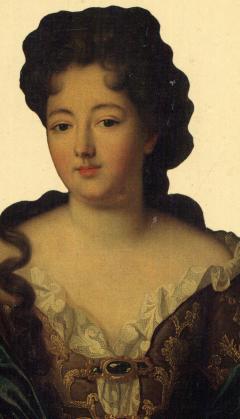
After her escape, Jeanne lived fairly secluded in Paris, as her husband wished for her to do. She returned to social-life after his death. The widowed Comtesse was a rich woman, a friend of letters, sciences and arts, and gathered a chosen society of French writers and philosophers, notably Voltaire , whom she admired a lot, around her. The Comtesse also was constantly attended by many eager admirers… one of them was a newly ennobled gentleman named Jean-Baptiste Glucq, who went by Baron de Saint-Port, and according to Saint-Simon Jeanne married the Baron in secret. (There is no proof of it.)
Jeanne was a very welcomed face at court and often frequented Versailles, where she had many friends. When the court resided at Fontainebleau, she stayed at the Baron’s Château de Sainte-Assise. Later on, she stayed with the Marquis de La Faye, a very close friend, at the Château de Condé.
The Comtesse was also a great collector of art with a famous collection. Jeanne owned plenty of paintings, among it a portrait of Charles I by Van Dyke, commissioned paintings herself, bought expensive furniture for her residences, along with tapestries, objets d’art and clothes. Her collection of jewellery and precious stones was gigantic. She apparently owned more than 8000 pieces. Her library was just as gigantic with around 18,000 books.
After many happy years in France, the Comtesse fell ill in 1734 and never fully regained her health. Jeanne died two years later, on 18 November 1736, at the age of sixty-six. She included her birds, which lived in a lavish aviary, in her will and composed her own epitaph: Ci-git, dans une paix profonde, cette Dame de Volupté, qui, pour plus de sûreté, fit son paradis dans ce monde. – Here lies, in deep peace, that lady of delight, who, as an extra precaution made her paradise in this world.
